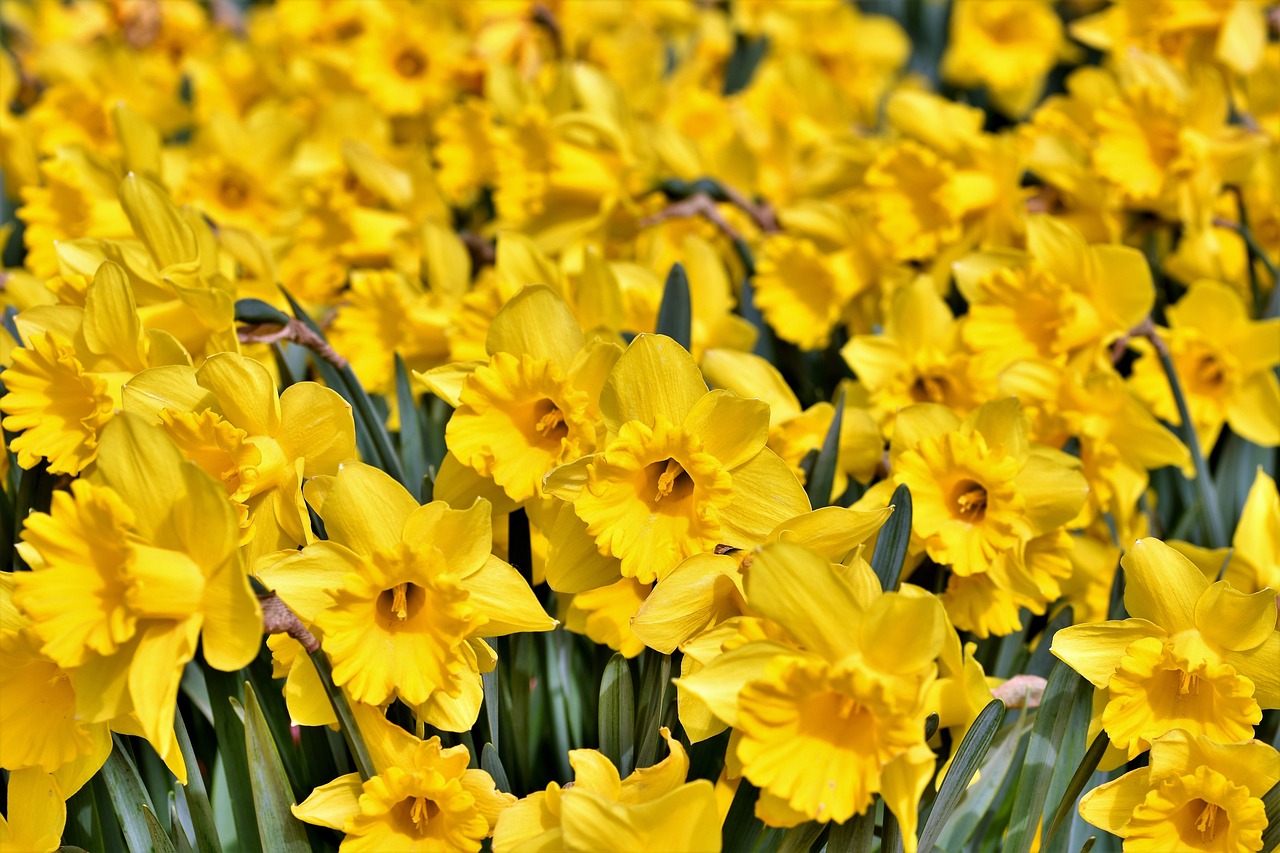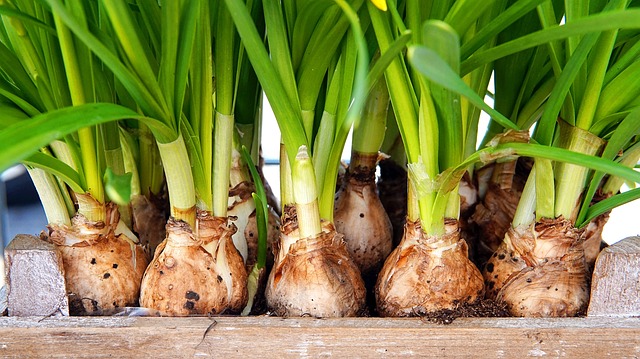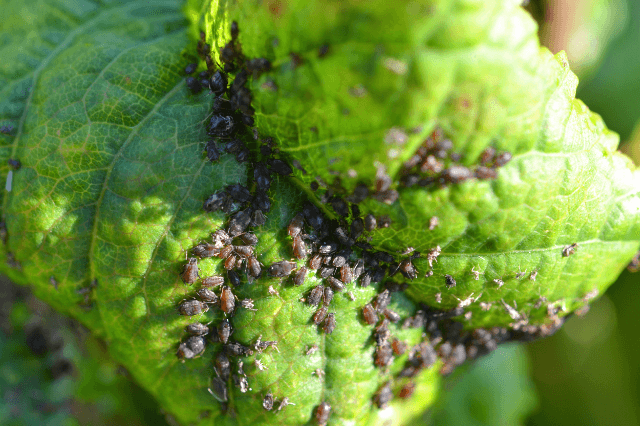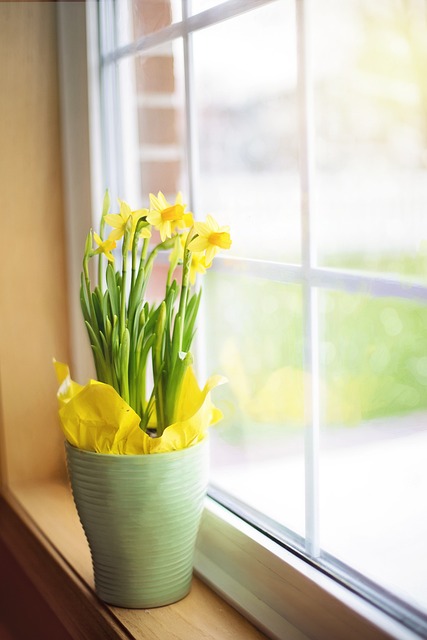
Table of Contents
The daffodil (Narcissus) belongs to the amaryllis family and symbolizes the start of spring. When in bloom, the daffodil has a beautiful yet very significant flower, which comes in many elegant colors. They have the unique shape of a trumpet with 6 petals. Daffodils are known for their delicate scent.
Daffodils are quite easy to grow and if you are thinking of adding some color to your garden spaces, then this complete guide has all the steps you need to take. Let’s have a look.
Growing Daffodils from Bulbs

Daffodils reproduce from bulbs that grow year in and year out. Let’s have a look at what you need to consider if you are growing your daffodils from bulbs.
· Growing
The growing process starts with picking bulbs. High-quality bulbs should be chosen which have been dried. It would be better to choose larger bulbs. You should keep in mind that when planting a bulb, plant twice as deep as its width. So, a 2-inch-wide bulb should be planted 4 inches in the soil. A gap of three to six inches between bulbs must be maintained.
· Propagating, Maintenance, and Care
After growing, if the plant is not providing desired results, you can apply fertilizer, which is high in potassium. In dry weather, be vigilant about flowering, as flowers can struggle in dry conditions.
Remove dead heads of flowers to have a clean garden appearance. You should take care that once flowers have bloomed in the spring, they should be allowed to grow until they die off. If you cut flowers down earlier, bulbs won’t be able to store energy for next year. If the soil has debris or grass, it must be removed, as they are not good for daffodils.
An important thing is to remove offshoot bulbs that form underground. This is not required frequently, but if the area is becoming overgrown, then it would be a good option. You will have to follow these steps:
- When daffodil leaves become yellow (which often happens in summer) make sure to dig the clump out.
- Put the bulbs in a shady area for two days to dry. Make sure to separate the bulblets from the parent bulb. Damaged bulbs must be discarded.
- Parent bulbs can be planted or can be stored for next year’s planting time.
| Sun Exposure | Plants need full sun to nourish properly. At least six hours of sunlight is required. |
| Best Time for Plantation | The ideal time to grow daffodils is two to four weeks before frost. |
| Soil Requirements | Daffodil prefers acidic soil. They can bear moisture, but there must be a proper drainage system. Otherwise, excessive moisture can rot the plant. |
| Water | In the spring, the plant requires watering on a regular basis. It is recommended to stop watering in late spring when flowers have faded. In the summer season, plants need drier soil. |
| As far as temperature is concerned, most daffodils are not suitable for warm climates. But some types of daffodils like Tazetta can bear warm climates. | |
| Fertilizer | In most cases, the plant doesn’t require fertilizer, but if the soil is not up to mark or the plant is not having a reasonable flower, fertilizer can be used. |
· Pests/Diseases

It can be said that daffodils are rodent-proof. The plant carries an acid called oxalic; it will keep it safe from pests. Oxalic can be toxic to pets so keep your dog or cat away from your daffodils.
- Narcissus flies can lay eggs at the bottom of a plant. The larva then reaches the bulbs which will cause worms inside the bulbs. If this happens, immediately remove the affected bulbs.
- Bulb mites can attack the daffodil’s bulbs. If you think this could be the case, remember that this could weaken the plants. Attacks from bulb mites usually happen when daffodils are grown indoors. Bulb mites can be cured with pest control sprays available in the market. Look out for an organic spray.
- Nematodes are usually referred to as roundworms. They are multicellular insects. They have smooth and segmented bodies. They are so tiny you can’t see them without a microscope. Nematodes are known to be the most dangerous for daffodils as it is almost not impossible to repair the damage caused by nematodes attacks. In some cases, their presence can result in quitting the growth of daffodils in that soil.
Growing Daffodils from Seeds

It might be hard to believe that daffodils can be grown from seeds, but this method is often used. Growing daffodils from seeds are not being adopted commonly as it takes too much time for daffodils to grow from seeds to matured plants. Growing through seeds can take up to five to six years.
Getting seeds
Growing from seeds starts with getting the seeds. This can be a bit tricky. When bees have completed the pollination process, a seed pod would have grown at the base of the daffodil bloom.
You can mark the stem by tying a piece of string around the stem. Seed pods will hold seeds in the fall. The color of the plant would turn brown. To check whether the seeds are ready, you will have to shake the stem, to see if the seeds have loosened. If seeds rattle around, it is a sign that they are ready for harvesting. After gathering the seeds, put them away safely till you are ready to plant them.
Propagating Seeds
When growing daffodils from seeds, in the first year, daffodils must remain indoors. Start by getting a large tray or pot which has been filled with soil. Seeds should be planted by maintaining at least a 2-inch distance between plants. Cover the seeds with half an inch of soil.
Place the pot where it gets at least six hours of sunlight. Moisture should remain in the soil. The seed will take weeks to sprout. When it sprouts, it would be in the shape of small onions. The plant will need to be there for at least three years. After remaining in the pot for three years, the plant will get a small bulb. At this stage, the plant will need to be moved to a larger planter. This process should be repeated each year. After five years you will be rewarded with bulbs, and highly likely you will get your first blooms.
Popular Varieties of Daffodils
| Barrett Browning | This has white color flowers. Barrett Browning has an orange color trumpet. It is suitable for cool areas. |
| Tete a Tete | This is known as a mini daffodil, obviously, which means it has tiny flowers. It is suitable for planting in containers. It also has a tendency of long-lasting. |
| Dutch Master | This has big yellow flowers. Dutch master has a bit larger trumpet. They can be grown in big quantities. |
| Jet Fire | This also belongs to the mini daffodil variety. It has yellow petals and orange cups. Jet fire blooms at the beginning of spring. |
| Petit Four | Petit four grows better in shady areas. It has white petals. It carries a pink colored double cup. Petit four reaches a height of 16 inches. |
| Cheerfulness | Cheerfulness has an elegant fragrance. It carries double flowers. Bloom time is in late spring. It appears in a cut flower shape. |
| Tahiti | Tahiti has golden yellow trumpets. They have beautiful red-orange frills among them, which give them a unique touch. Tahiti is a long-lasting flower. |
Wrapping Up
Daffodils are a great addition to your garden or indoors. Whether you decide to grow your daffodils from bulbs or seeds depends on how long you would prefer to wait for your daffodils to mature.
Growing daffodils through bulbs make the process very easy but if you have patience and plenty of time, you can try growing them through seeds too. Whatever way you decide to grow your daffodils, we hope this article makes growing daffodils a whole lot easier for you.






